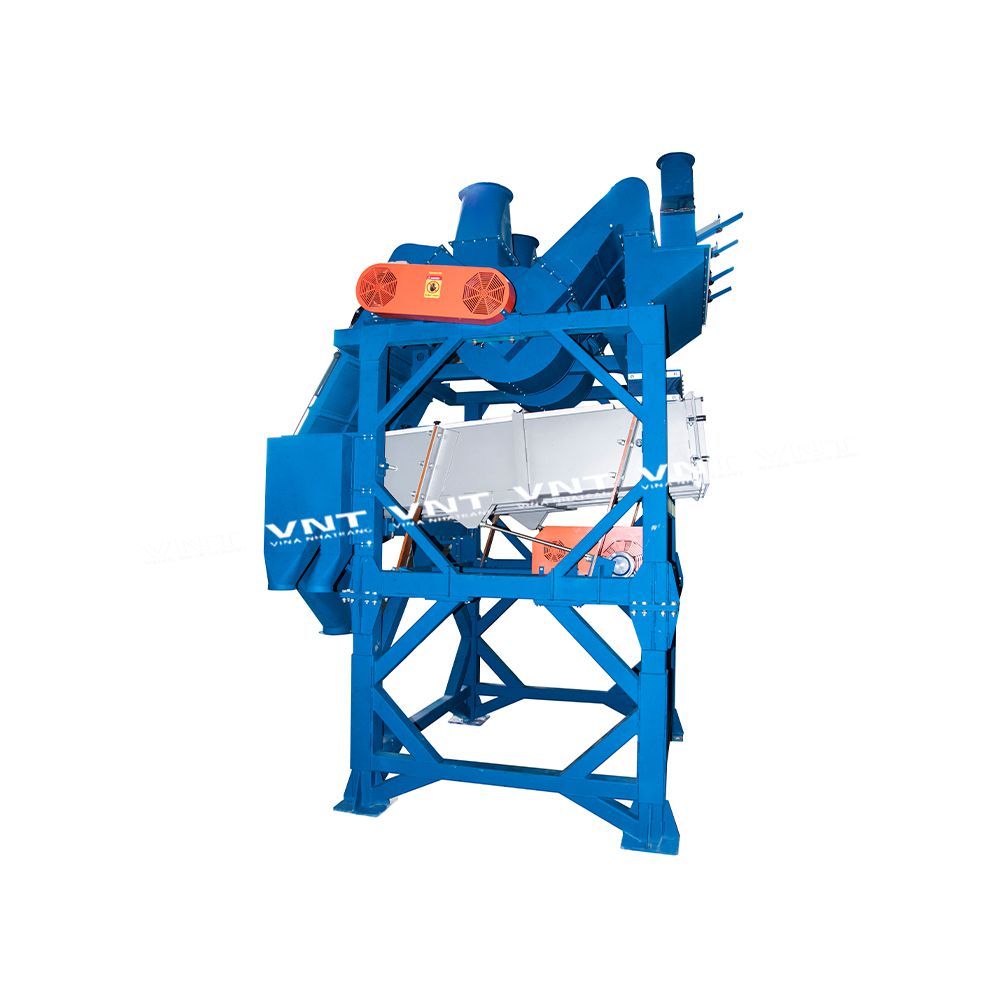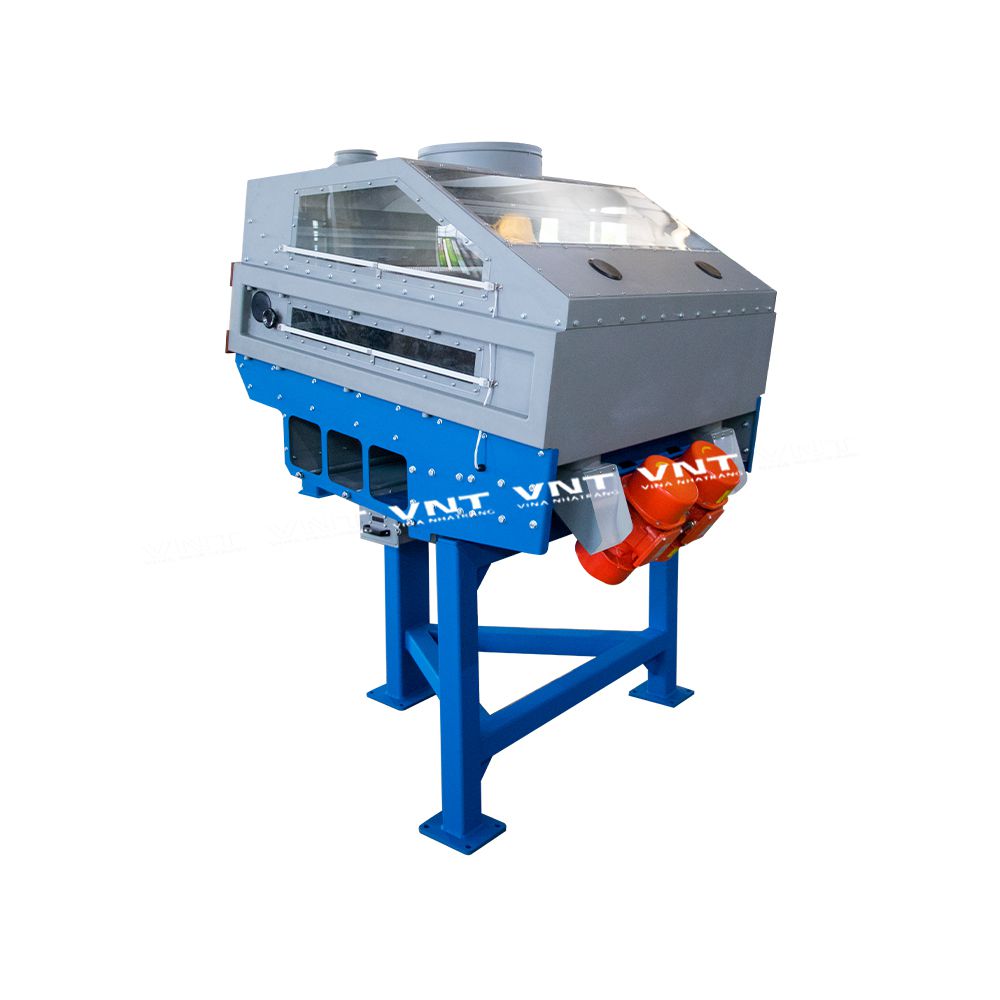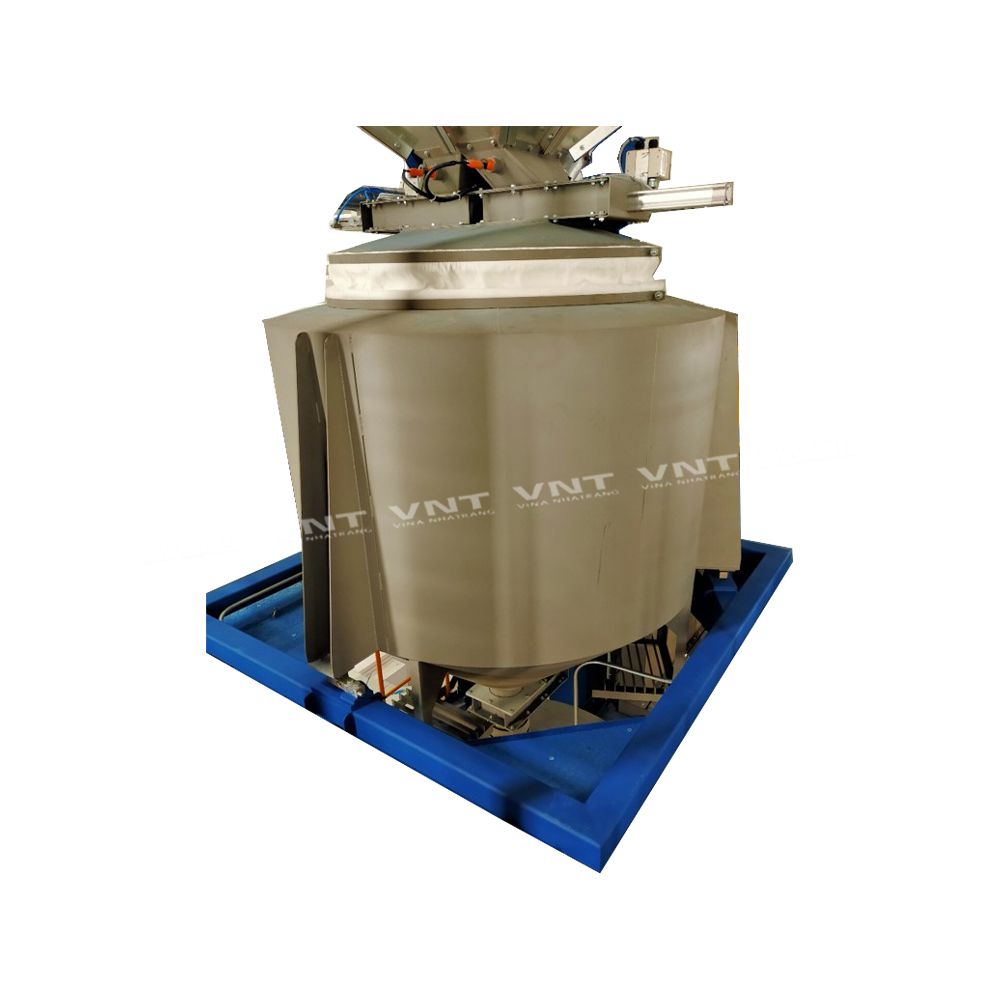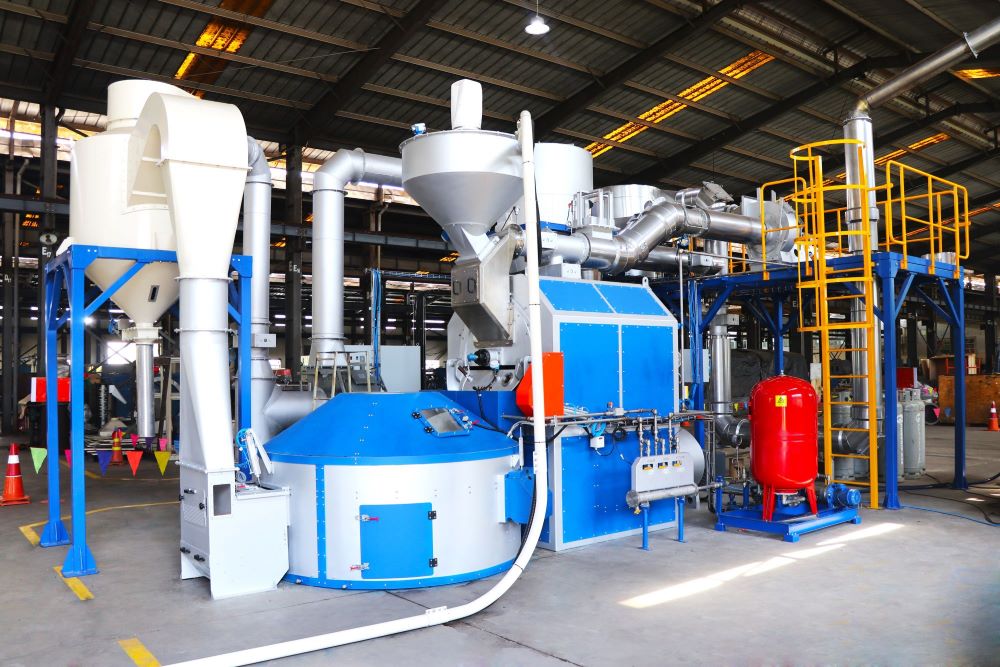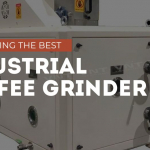Essential Coffee Roaster Equipments – What Equipment is Needed to Roast Coffee Commercially?
Essential coffee roaster equipment includes devices like a destoner to remove impurities such as stones and wood branches from coffee beans, an automatic scale and loader, and a heat sealer or containers. These are crucial for running a successful coffee roasting business.
The coffee industry is constantly evolving, with consumers becoming increasingly discerning about their coffee’s quality and origin. By roasting your own beans, you have the opportunity to control every aspect of the process, from selecting green beans to creating unique roast profiles that set your brand apart. However, to achieve this level of control and consistency, investing in the right equipment is crucial.
Let’s dive into the essential coffee roaster equipment that will form the backbone of your commercial roasting operation.
The Core Roasting Machine
At the heart of any commercial coffee roasting operation lies the roasting machine itself. This is arguably the most important piece of equipment you’ll invest in, as it directly impacts the quality and consistency of your roasts.
Commercial coffee roasters come in various sizes and types, but they generally fall into two main categories:
- Drum Roasters: These are the most common type of commercial roasters. They consist of a rotating drum that tumbles the coffee beans while hot air is forced through the drum. Drum roasters are known for their ability to produce consistent, even roasts and are often preferred for their versatility in handling different roast profiles.
- Fluid Bed Roasters: Also known as hot air roasters, these machines use hot air to agitate and roast the beans. They typically offer faster roasting times and can be more energy-efficient than drum roasters. However, they may have limitations when it comes to producing darker roasts.
For commercial operations, it’s crucial to invest in a high-volume, industrial-sized machine. The capacity of your roaster will depend on your production needs, but common sizes range from 5kg to 120kg per batch. When selecting a roaster, consider factors such as:
- Batch size capacity
- Energy efficiency
- Control systems (manual vs. automated)
- Ability to connect to software for roast profiling and data logging
- Maintenance requirements
- Brand reputation and after-sales support
Remember, your roasting machine is the cornerstone of your operation, so it’s worth investing in a high-quality, reliable model that can grow with your business.
Green Coffee Processing Equipment
Before the roasting process begins, it’s crucial to ensure that your green coffee beans are clean and free from defects. This is where green coffee processing equipment comes into play. Let’s explore some essential pieces of equipment that help prepare your beans for roasting:
- Pre-Cleaner: A pre-cleaner is an invaluable piece of equipment for any commercial coffee roasting operation. This machine removes foreign materials from your green coffee beans, such as stones, twigs, and other debris that may have been mixed in during harvesting or processing.
Key benefits of a pre-cleaner include:
- Improved coffee quality by removing unwanted materials
- Protection of your roasting equipment from damage
- Enhanced efficiency in the roasting process
- Reduced risk of contamination in the final product
When choosing a pre-cleaner, consider factors such as capacity, energy efficiency, and ease of maintenance.
- Destoner: While a pre-cleaner removes most foreign objects, a destoner specifically targets stones and other dense materials that might have slipped through. Stones can cause significant damage to your roasting equipment if not removed.
A destoner typically works by using a combination of vibration and air flow to separate stones from coffee beans based on their density. This equipment is crucial for:
- Protecting your roasting machine from potential damage
- Ensuring the safety of your grinding equipment
- Maintaining the quality and purity of your roasted coffee
Look for destoners with adjustable settings to accommodate different bean sizes and densities.
- Auto Scale: An auto scale, or automatic weighing system, is a crucial piece of equipment for maintaining consistency in your roasting operation. This system accurately measures the weight of green coffee beans before they enter the roaster, ensuring that each batch is precisely measured.
Benefits of an auto scale include:
- Consistent batch sizes for more uniform roasting
- Improved inventory management
- Increased efficiency by reducing manual weighing time
- Better data tracking for roast profiles and yield calculations
When selecting an auto scale, consider factors such as capacity, precision, integration with your roasting system, and data logging capabilities.
Essential Accessories for Roasting
While the roasting machine is the star of the show, several accessories are crucial for achieving precise, high-quality roasts:
- Cooling Trays: After roasting, beans need to be cooled quickly to stop the roasting process and preserve the desired flavor profile. Commercial cooling trays are typically equipped with powerful fans that rapidly cool the beans, preventing over-roasting and ensuring consistency.
- Thermometers: Precise temperature control is essential for achieving consistent roasts. Many modern roasters come with built-in temperature probes, but having additional thermometers can provide extra data points and serve as a backup.
- Bean Triers: These long, spoon-like tools allow you to extract small samples of beans during the roasting process. By examining these samples, you can assess the color, aroma, and progress of the roast, making adjustments as needed.
- Spotlight with Full-Spectrum Bulb: Accurate color assessment is crucial in determining the roast level. A full-spectrum light source helps you evaluate the bean color more accurately, especially when comparing it to color standards or previous batches.
These accessories work together to give you greater control and insight into the roasting process, allowing you to fine-tune your roasts and maintain consistency across batches.
Quality Control Tools
In commercial coffee roasting, consistency is key. Your customers will expect the same high-quality product with every purchase, which is why investing in quality control tools is essential. Here are some crucial pieces of equipment for maintaining consistency:
- Color Analyzers: These devices measure the color of roasted beans, providing an objective assessment of roast level. This helps ensure consistency across batches and allows you to match specific color targets for different roast profiles.
- Moisture Meters: Green coffee beans typically have a moisture content of 10-12%. Monitoring moisture levels before and after roasting helps you assess the roasting process’s efficiency and ensures consistent quality. Moisture meters are invaluable for this purpose.
- Precision Scales: Accurate weighing is crucial at various stages of the roasting process. High-precision scales help you measure green beans, roasted beans, and samples for cupping. Look for scales with at least 0.1g precision for smaller measurements and larger capacity scales for weighing full batches.
- Cupping Equipment: While not strictly roasting equipment, cupping tools are essential for quality control. This includes cupping bowls, spoons, and grinders dedicated to sample evaluation.
By incorporating these quality control tools into your roasting operation, you’ll be able to maintain consistent quality, troubleshoot issues more effectively, and refine your roast profiles with greater precision.
Packaging Equipment
Once you’ve roasted your coffee to perfection, proper packaging is crucial to preserve its freshness and flavor. Here are some essential pieces of packaging equipment for a commercial roasting operation:
- Automatic Weigh and Fill Packaging Machines: These machines automate the process of measuring and filling bags with roasted coffee. They significantly increase efficiency, especially for high-volume operations. Look for models that can handle various bag sizes and types to accommodate different product lines.
- Heat Sealers: After filling, bags need to be sealed to protect the coffee from air and moisture. Heat sealers come in two main types: horizontal sealers (suitable for flat-bottom or side-gusseted bags), vertical sealers (ideal for stand-up pouches or bags with zippers), etc. Consider factors such as sealing speed, temperature control, and the types of packaging materials you’ll be using when choosing a heat sealer.
- Label Printers and Applicators: For a professional look and to comply with labeling regulations, invest in a good quality label printer. Some systems can print and apply labels in one step, increasing efficiency.
- Degassing Valves: While not equipment per se, one-way degassing valves are crucial for packaging freshly roasted coffee. These valves allow CO2 to escape without letting oxygen in, preserving the coffee’s freshness.
When selecting packaging equipment, consider your production volume, the types of packaging you plan to use, and potential future growth. Packaging plays a crucial role in preserving your coffee’s quality and presenting your brand, so it’s worth investing in equipment that can deliver consistent, professional results.
Health and Safety Equipment
Ensuring a safe working environment is paramount in any commercial operation, and coffee roasting is no exception. Here are some essential health and safety equipment considerations:
- Fire Safety Equipment: Coffee roasting involves high temperatures and potentially combustible materials. Essential fire safety equipment includes: fire extinguishers rated for electrical and oil fires, smoke detectors and fire alarms, and water lines with spray heads for emergency cooling of roasters.
- Ventilation System: Proper ventilation is crucial to remove smoke, chaff, and heat from the roasting area. A good ventilation system should include: exhaust hoods over roasting equipment, air filtration systems to remove particulates and odors, and make-up air systems to balance air pressure.
- Personal Protective Equipment (PPE): Provide your staff with appropriate PPE, including: heat-resistant gloves for handling hot equipment, dust masks or respirators to protect against chaff and dust, and safety glasses to protect eyes from flying chaff.
- Cleaning Equipment: Regular cleaning is essential for both safety and quality. Invest in: industrial-grade vacuum cleaners for removing chaff and debris, cleaning brushes and tools designed for coffee roasting equipment, and food-grade cleaning solutions safe for use with coffee
- First Aid Kit: Keep a well-stocked first aid kit easily accessible in case of minor injuries.
Remember to stay compliant with local health and safety regulations, which may require additional equipment or specific certifications. Regular staff training on safety procedures and equipment use is also crucial.
Additional Considerations
While we’ve covered the core equipment needed for commercial coffee roasting, there are a few additional items that can enhance your operation:
- Sample Roasters: A smaller roaster (typically 100g to 1kg capacity) is invaluable for testing new beans, developing roast profiles, and quality control. Sample roasters allow you to experiment without committing large quantities of green coffee.
- High Capacity Floor Scales: These are useful for weighing large bags of green coffee and tracking weight loss during roasting. This data can help you optimize your roasting process and manage inventory more effectively.
- Green Coffee Storage: Proper storage of green coffee beans is crucial for maintaining quality. Consider investing in: climate-controlled storage areas, airtight containers or grain-pro bags for smaller quantities, and pallet racking systems for efficient storage of large quantities.
- Roast Profile Software: Many modern roasters can connect to software that allows you to track and replicate roast profiles. This can be a game-changer for consistency and efficiency.
- Grinders: While not strictly necessary for roasting, having a high-quality grinder on hand is useful for sample evaluation and potentially for offering ground coffee to customers.
- Chaff Collector: This equipment separates chaff (the outer skin of coffee beans that comes off during roasting) from the roasted beans, improving cleanliness and reducing fire risk.
- Coffee Roaster System: A complete coffee roaster system goes beyond just the roasting machine. It integrates various components to create a seamless, efficient roasting operation.
Budget Considerations
When setting up a commercial roasting operation, it’s important to prioritize your equipment purchases based on your budget and immediate needs. Here’s a general order of priority:
- Core roasting machine
- Cooling tray (if not integrated with the roaster)
- Basic quality control tools (thermometer, bean trier, scales)
- Essential safety equipment
- Basic packaging equipment
- Advanced quality control tools
- Automated packaging systems
- Additional efficiency-enhancing equipment
It’s often better to invest in high-quality essential equipment rather than trying to purchase everything at once with lower-quality items. As your business grows, you can gradually add more sophisticated equipment to your setup.
Integrating Your Roasting Equipment
As you build out your commercial coffee roasting operation, it’s important to consider how all these pieces of equipment work together. A well-integrated system can significantly improve efficiency, consistency, and overall product quality.
Consider the flow of your coffee from reception to packaging:
- Green coffee reception and storage
- Pre-cleaning and destoning
- Weighing and loading into the roaster
- Roasting process
- Cooling and chaff removal
- Post-roast sorting and quality control
- Grinding (if applicable)
- Packaging
Each step should flow smoothly into the next, minimizing manual handling and reducing the risk of errors or contamination. Many modern roasting facilities are designed with this workflow in mind, often incorporating automated systems to move coffee between different stages of the process.
Ready to level up your Commercial Coffee Roasting System? Contact our experts today!
Conclusion
Embarking on a commercial coffee roasting venture is an exciting journey that requires careful planning and investment in the right equipment. The essential coffee roaster equipment we’ve discussed forms the foundation of a successful roasting operation:
- A reliable, high-capacity roasting machine
- Crucial accessories for precise roasting control
- Quality control tools for consistency
- Efficient packaging equipment
- Necessary health and safety equipment
By investing wisely in these essential pieces of equipment, you’ll be well-positioned to produce high-quality, consistent roasts that will set your coffee business apart in a competitive market.
Whether you’re just starting out or looking to upgrade your existing setup, we hope this guide to essential coffee roaster equipment has provided valuable insights to help you make informed decisions for your commercial roasting operation. Happy roasting!


